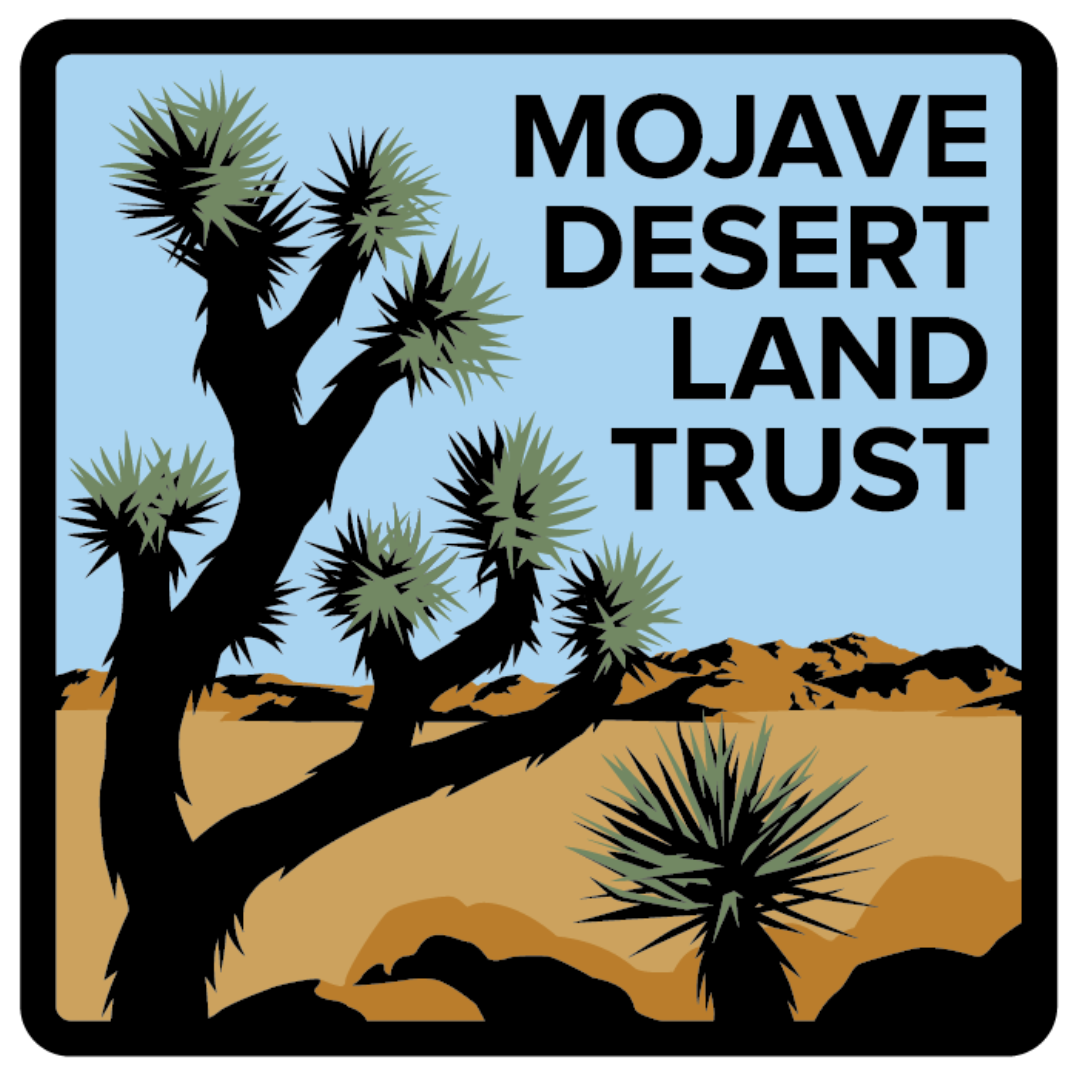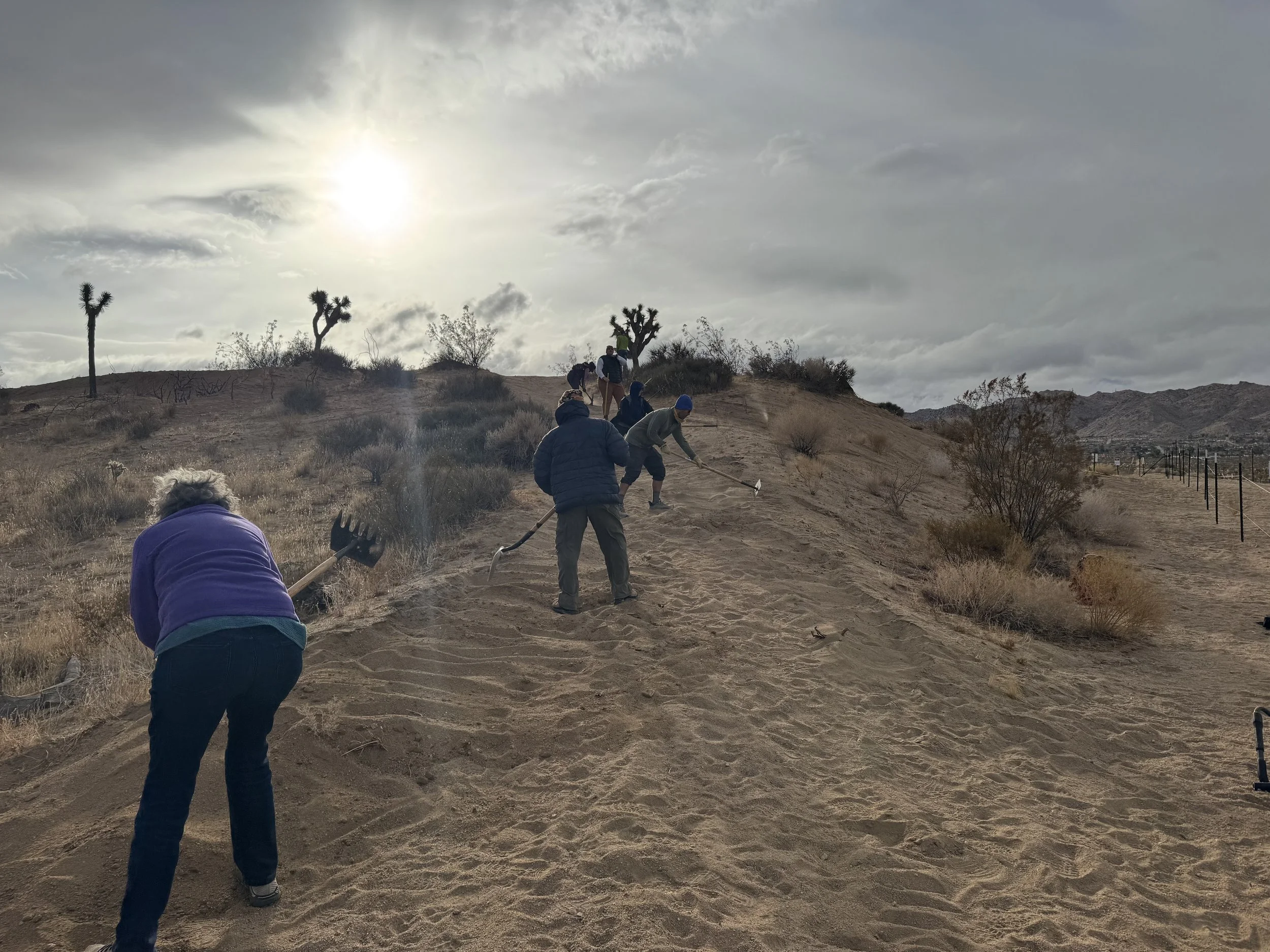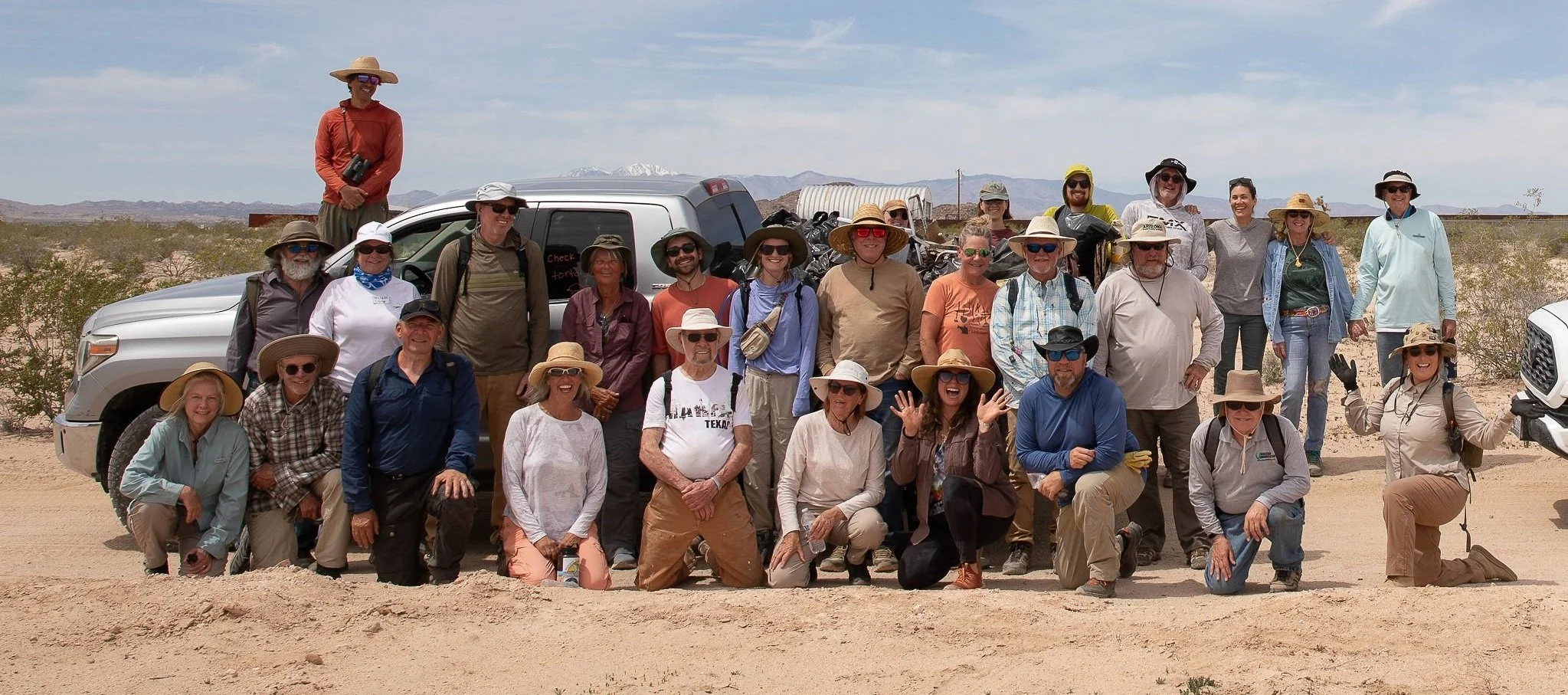Behind-the-scenes with teams keeping Mojave Desert habitat intact
By Kayla Thompson, Natural Resources Program Coordinator
Canyon washes, open desert scrub, and Joshua tree woodlands are among the 8,500 acres stewarded by the Mojave Desert Land Trust in the Morongo Basin region. These preserves include popular trails and support wildlife corridors between Joshua Tree National Park and other public lands.
Once a preserve is acquired by MDLT, the stewardship work begins in earnest. Our teams regularly return to these properties to monitor and restore habitat. Issues regularly arise on unfenced land and the resulting damage needs to be addressed on a rolling basis to ensure we maintain this quality habitat and prevent further degradation.
During the first half of 2025, the most common types of issues we witnessed in the Morongo Basin were trash dumps and off-highway vehicle (OHV) tracks. We tackled 33 dump sites across nine preserves and 42 instances of illegal OHV use across seven different preserves.
Disturbance like this can cause serious damage to the desert ecosystem.
Windblown trash can attract ravens, which in turn pray on desert tortoises. Dumping leads to higher fire risk, especially from vehicle sparks, and toxic materials can harm soil and water health in the long-term.
The fragile desert topsoil and sensitive native flora can take years to recover from one vehicle trespass. When driven on undesignated routes, vehicles can kill existing vegetation and prevent future plant growth from establishing in the compacted soil. The resulting lack of plant roots and soil crusts holding the soil in place can lead to more soil erosion, while tire track depressions can also redirect the natural flow of water.
Animal life is also impacted by the decrease in plant life that they rely on for their diet. OHV traffic may also run over easily missed animal burrows, potentially displacing or causing death to individuals.
Left: OHV tracks traveling into Coyote Valley Preserve. Right: A dump site containing household trash and furniture found on one of MDLT’s preserves in the Bartlett Mountains.
Volunteers play an essential role in helping the Land Stewardship Team address these issues on our local lands and satellite preserves.
From January to June 2025, volunteers dedicated 1,177 hours as part of the regular stewardship activities. During Local Patrols and Monthly Monitoring events, we drove along boundaries and interior roads and walked interior portions to document any activities such as dumping, illegal OHV use, vandalism, or camping. The majority of volunteer time this year was spent on much needed restoration, trash removal, and fencing as part of Stewardship Days.
Volunteer Sally assists with raking the soil in preparation for vertical mulching.
Quick responses are key in addressing OHV damage to discourage any further traffic and restore to improve damaged habitat. Over the last six months, volunteers spent 299 hours helping staff restore 2,500 liner feet of illegal routes. This was achieved via a technique called vertical mulching, where hardened soil is decompacted using shovels, pick axes, and tools. Dead branches are gathered and “planted” into randomly scattered holes to mimic a natural looking habitat. The dead bouquets serve as a visual block for further vehicle incursions while also serving as a site for seed chaff to collect and encourage future plant growth.
Left: A heavily used illegal OHV route discovered during a Local Patrol at Coyote Valley Preserve. Right: The same site after habitat restoration was conducted by staff and volunteers.
Windblown trash and dump sites containing household and yard waste and construction debris are commonly discovered on MDLT-owned land. Volunteers spent 280 hours helping to remove trash that was taken to the local landfill. Seven clean-up events were conducted and a total of 2,420 pounds of trash collected across five different preserves.
Volunteer Melanie from Four Wheel Campers removes trash from the Section 33 Gateway Preserve. Photo credit: Elisabeth Brentano.
Boundary fencing is often used when OHV incursion and trash dumping becomes a persistent issue. T-posts and wire strands are used to prevent traffic while still allowing easy access by wildlife and low-impact recreationists. So far this year, volunteers have assisted staff in installing over 3.5 miles of fencing on preserves where there had been significant incursion rates, notably at the Coyote Valley Preserve and Palisades Ranch. Both of these preserves are known to provide habitat for the Endangered Mojave desert tortoise (Gopherus agassizii). The fencing installed ensures the continued protection of critical habitat.
Left: Staff member Kirby Urtiaga preparing T-posts to be installed along the boundaries of Coyote Valley Preserve. Right: Volunteers from Four Wheel Campers pounding T-posts along boundary line. Photo credit: Elisabeth Brentano.
Six large volunteer group events helped with MDLT’s stewardship mission so far in 2025, including Outward Bound California, Four Wheel Campers, Force of Nature, Happy People Hike, Road Less Traveled, and Boy Scouts of America, who collectively contributed a total of 524 hours of volunteer support.
We could not have done this work in 2025 without the support of our community. Land stewardship volunteer opportunities will resume again in the fall once the heat of summer is over. Keep an eye out for future events and sign up to join this essential work! If you are new to volunteering, register for an orientation via our website!
Four Wheel Campers volunteers and MDLT staff during a stewardship activity in the Morongo Basin. Photo credit: Elisabeth Brentano.






